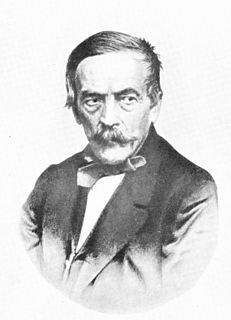| Pogonocherus arizonicus | |
|---|---|
| Scientific classification | |
| Kingdom: | Animalia |
| Phylum: | Arthropoda |
| Class: | Insecta |
| Order: | Coleoptera |
| Suborder: | Polyphaga |
| Family: | Cerambycidae |
| Subfamily: | Lamiinae |
| Tribe: | Pogonocherini |
| Genus: | Pogonocherus |
| Species: | P. arizonicus |
| Binomial name | |
| Pogonocherus arizonicus Schäffer, 1908 | |
| Synonyms | |
| |
Pogonocherus arizonicus is a species of beetle in the family Cerambycidae. It was described by Gottlieb August Wilhelm Herrich-Schäffer in 1908. It is known from Mexico and the United States. [1]

Beetles are a group of insects that form the order Coleoptera, in the superorder Endopterygota. Their front pair of wings are hardened into wing-cases, elytra, distinguishing them from most other insects. The Coleoptera, with about 400,000 species, is the largest of all orders, constituting almost 40% of described insects and 25% of all known animal life-forms; new species are discovered frequently. The largest of all families, the Curculionidae (weevils) with some 70,000 member species, belongs to this order. Found in almost every habitat except the sea and the polar regions, they interact with their ecosystems in several ways: beetles often feed on plants and fungi, break down animal and plant debris, and eat other invertebrates. Some species are serious agricultural pests, such as the Colorado potato beetle, while others such as Coccinellidae eat aphids, scale insects, thrips, and other plant-sucking insects that damage crops.

Dr Gottlieb August Wilhelm Herrich-Schäffer was a German entomologist and physician. He was born, and died, in Regensburg. Herrich-Schäffer studied and collected particularly butterflies and moths (Lepidoptera). He was chairman of the Regensburg Botanical Society from 1861 to 1871, and was awarded an honorary citizenship of Regensburg in 1871.

Mexico, officially the United Mexican States, is a country in the southern portion of North America. It is bordered to the north by the United States; to the south and west by the Pacific Ocean; to the southeast by Guatemala, Belize, and the Caribbean Sea; and to the east by the Gulf of Mexico. Covering almost 2,000,000 square kilometres (770,000 sq mi), the nation is the fifth largest country in the Americas by total area and the 13th largest independent state in the world. With an estimated population of over 120 million people, the country is the tenth most populous state and the most populous Spanish-speaking state in the world, while being the second most populous nation in Latin America after Brazil. Mexico is a federation comprising 31 states and Mexico City, a special federal entity that is also the capital city and its most populous city. Other metropolises in the state include Guadalajara, Monterrey, Puebla, Toluca, Tijuana and León.


